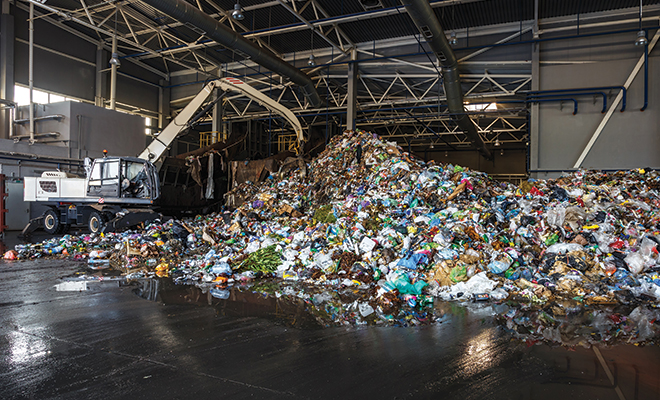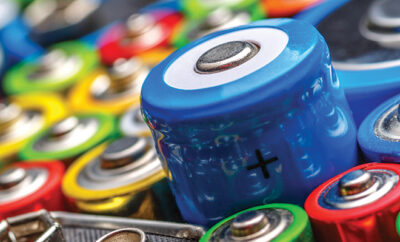
Recycling Revisited
What’s actually recycled in your home and life? A lot less than before.
On January 1, 2018, China implemented a ban on many types of scrap plastic and paper, and it raised the standards for the materials it does accept. China’s new policy banned 24 materials and required other materials to be no more than 0.5 percent impure. So that greasy pizza box could ruin a whole batch of recycled paper. It should go to the landfill!
These regulations are something we don’t always think about or recognize. China previously accepted about 45 percent of the world’s plastic waste. Estimates are that 120 million tons of plastic waste will be displaced by 2030 because of this policy. Where will these no-longer-accepted waste materials go? For the time being, they are going to landfills. Many people find this unacceptable, but this is a crisis of our own making.
Americans recycle about 66 million tons of material each year, one-third of which went to China for processing. Today, waste management experts are scrambling to find places to sell recyclables, and they are having a hard time. Some countries in Asia, such as India, Vietnam and Indonesia, are taking in recyclables; but most of our recyclables are going to landfills here in the United States.
Recyclables are considered a commodity; that is, they have value to manufacturers who break the materials down into raw materials that are then sold to other manufacturers. Manufacturers buy the raw materials and mark their goods as made with recycled materials. Consumers feel good about buying goods made with recycled materials, so it’s a win-win for all.
What’s recycled, and how can you help? Newspaper is one of the easiest materials to be recycled into new newsprint. Food-soiled newspaper goes in the trash and wet newsprint is recycled. Newspapers can also be used in composting. Most newsprint ink is made with plant-based inks and won’t contaminate your compost pile.
Old clothing and other types of textiles are recycled to make new materials. The textile industry is a $1 trillion industry with more than 80 billion garments being produced annually. Textile recycling has significant environmental benefits. Recycling decreases the amount of space needed in the landfill, avoids the use of virgin fibers, reduces the consumption of energy and water, avoids pollution and lessens the demand for dyes. Natural fibers are sorted by material and color. Textiles are then separated into fibers and spun into yarn. Yarn is re-spun for weaving or knitting. Polyester-based textiles are shredded and then processed into polyester chips that are then melted and used to create new polyester fabrics. The forward-looking company Evrnu, for example, uses new technology that recycles cotton garment waste to create premium, renewable fiber that’s used in new garments.
Glass is another material that’s easily recycled. Your recycler will probably take your container glass or food and beverage containers. They are made with soda-lime glass. However, not all glass is the same. Most recyclers won’t take drinking glasses, broken or not; they may have borosilicate added to make them more temperature resistant. One innovative way to get rid of broken glass is to put it under a shed to deter rats! If you have colored bits of glass, you might ask a local potter or ceramic artist if they can use them.
Recycled tile is durable, nontoxic and easy to clean. Tile is scratch-resistant and fire-resistant. Tile doesn’t absorb liquids or release unpleasant odors when newly installed as carpet sometimes does. Tile is made from clay and other minerals that must be mined. It is usually less expensive to use recycled materials than to manufacture tile from raw materials. Tiles can be made from factory waste, such as granite dust or tiles broken in manufacturing, or from post-consumer waste such as recycled glass. Some of the tiles have a translucent iridescence that designers love for their decorative qualities.
Used rubber is more difficult to recycle than other materials, which has slowed the growth of the tire recycling industry. During tire manufacturing, rubber undergoes a process known as vulcanizing, which makes tire rubber hard and durable. Thanks to advances in recycling technology, tire-derived fuel is replacing coal in many industrial applications, including cement kilns and pulp and paper mills.
Regardless of your stance on recycling, it’s here to stay. The world is running out of space, meaning landfills, to put all of modern society’s waste. As this trend continues, each of us will be required to spend more time sorting through our recyclables and take a stronger stance on the products we use. The future promises to challenge waste management experts in how to balance society’s needs versus the needs of our planet. Remember the three Rs: reduce, reuse and recycle. ■
Sources: blog.trashbackwards.com, earth911.com, huffingtonpost.com, livegreen.recyclebank.com, motherearthnews.com, nytimes.com and science.howstuffworks.com.







